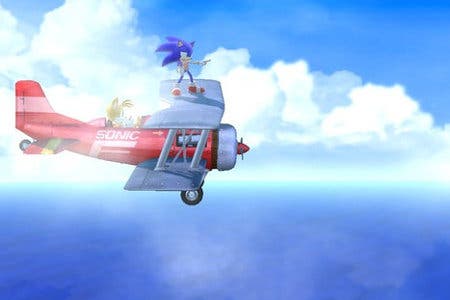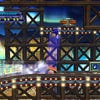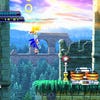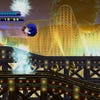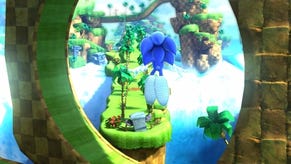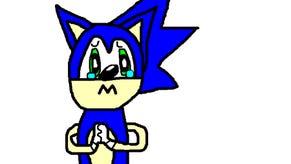Sonic the Hedgehog 4: Episode 2 Review
Hedging your bets.
Somebody needs to check Sega's calendar. It's been 18 months since the first episode of Sonic the Hedgehog 4 was released, leading many fans to believe that the wild blue wonder's foray into episodic digital gaming was over before it had properly begun. In truth, the delay is just the latest example of how Sega is still frantically trying to retool its mascot for modern audiences while appeasing a vocal fanbase that has stuck by him through thickand thin.
Sonic the Hedgehog 4 was, in most respects, a game aimed squarely at those loyal yet disgruntled fans. A 2D platformer in the '90s style with none of the 3D distractions or cosplay characters that blighted the series in the 32-bit era and beyond. It succeeded, mostly, but there were still enough dissenting voices that Sega clearly felt the concept needed more work before serving up the next helping.
Episode 2 arrives with some major changes then, and not all for the better. Old, bad habits are once again evident, while the design itself is still frustratingly not quite right. Sonic is less weightless and skittish than in Episode 1, but now the scale has perhaps tipped too far the other way. Getting up to speed takes longer, while movement at low speeds is incredibly sluggish; annoying when trying to navigate some platforms, absolutely fatal when attempting to survive the poorly handled boss fights.
In terms of the series past, Sonic the Hedgehog 2 is the obvious model for this latest offering, as sidekick Tails is brought back into the fold. This immediately alters both the flow and pace of the single player game, while also paving the way for co-operative multiplayer.
Tails operates much as he did in the olden days, following Sonic around and helping out with combination moves. Jump and call him into action and Tails can fly you to higher areas, or past obstacles. Do the same on the ground and the duo form a rolling ball of furry destruction, smashing barriers and crushing enemies. Join forces underwater and Tails uses his double tail as a propeller for a little anthropomorphic submarine action.
For every moment where the team-up concept works, encouraging you to explore beyond the boundary of the screen, there are many more where these additional abilities have encouraged lazy design: sudden dead ends that can only be flown over, and instant deaths that can only be avoided by knowing when to fly or roll. Such moments feel inorganic, and raise suspicions that the inclusion of Tails was due more to the need to offer multiplayer than any burning creative need to have him in the game.
The co-op is frankly terrible anyway, using a distracting catch-up mechanism - even when playing online - that means the trailing player is constantly teleporting to keep pace with their partner. Rather than working together, it's more of a scramble to stay together, and the lurching camera kills whatever flow the game builds up.
In fact, the flow of the game is patchy in general, ranging from smile-inducing sections that recall the series' best to examples of the awful design that dragged the series down. There's a lack of faith in Sonic's core appeal that will be familiar to long term hedgehog watchers, as the game conspires to get him snowboarding, flying or surfing on oil slicks rather than coming up with actual environments designed around his strengths.
The settings range from submerged ruins to sandblasted oil refineries and an aerial fortress, but the festive funfair of White Park Zone is the only real standout, from an aesthetic point of view. The music, as in Episode 1, is a terrible pastiche of what arcade game music should sound like. It looks and sounds like a Sonic game, but only from a distance.
Equally familiar is the way that too many levels feature sections that are little more than non-interactive rollercoasters, where all you do is hold the stick to the right before hurtling into a trap at the end. When you've collected over a hundred rings and then lose them because of cheap shots like that, it's hard to be charmed by whimsical nostalgia. Progress instead becomes one of undue caution, as Sonic Team's idea of increasing difficulty still seems to involve punishing the player for not having played the level before.
It's this constant push-pull friction that ultimately drags on Episode 2, sapping its momentum. You can be reminded of why you love Sonic one moment, and reminded of his worst moments the next. For all the bits Sonic Team gets right, there's a lingering sense that they no longer know how to do this stuff naturally. Creating challenging and interesting levels, striking a balance between speed and precision, these are things that should be at the core of a Sonic game, and the fact Episode 2 only occasionally hits the mark, and sometimes misses it completely, is worrying.
It's very easy to nit-pick where Sonic is concerned, though. Punch drunk as we are, fans have become accustomed to being let down and any evidence of missteps can be blown out of proportion. Episode 2 certainly isn't terrible, but nor is it the much-vaunted return to form that Sega promises every time those blue spikes hove into view.
You only need to look at a game like Rayman Origins, with its beautiful balancing, ingenious design and addictive gameplay layers, to see that Sonic's baby steps back towards relevance aren't quite that impressive. Episode 2 is a very good Sonic game, judged against recent form, but he's still a long way from catching up to his peers, no matter how fast he runs.
